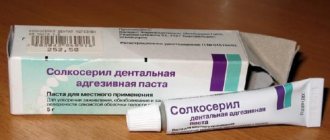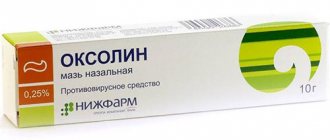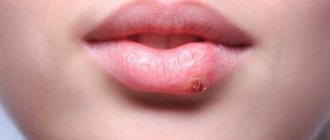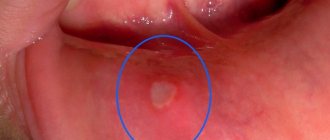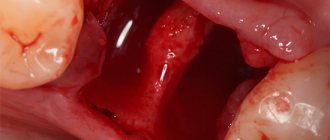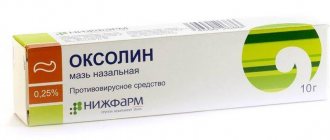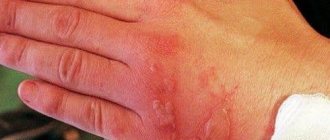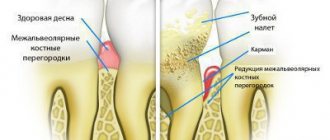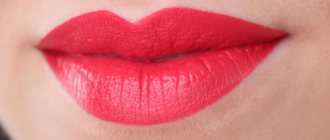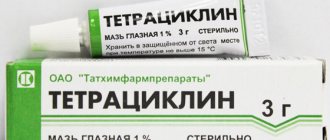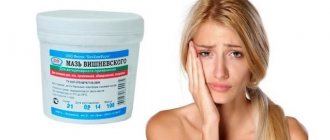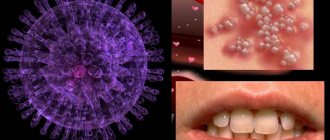The best ointment for healing wounds on the skin is one that has a quick effect, simultaneously disinfects and quickly restores injured tissue structures. An insignificant factor is the price aspect (high cost). There are many options that are quite affordable but provide good performance.
Every day, every person performs a lot of things, moves around in space, and leads an active lifestyle. Therefore, no one is immune from the appearance of various scratches, wounds, cuts on the skin of the hands and feet. This can be abrasion from new shoes, a cut with a knife when cooking, a scratched mosquito bite, and many other things that lead to disruption of the integrity of the skin. Any, even the most insignificant, wound is an open gate for infection, causing inflammation of the damaged area and, often, purulent processes. Therefore, the first thing that needs to be done in such a situation is to treat the wound area with special agents that have antiseptic and healing properties. Such medications should always be on hand.
Cheap, quick-acting wound-healing ointments
When receiving an injury in the form of an open wound, a person is willing to pay quite a significant amount just to eliminate the problem. But it is not always important to buy too expensive a remedy. There are inexpensive, good ointments on sale that are designed to treat and heal various skin injuries, which:
- disinfect the damaged surface;
- relieve the inflammation process;
- easy and quick to apply.
Many of them also have analgesic properties. In addition, such products are commercially available and can be used without medical prescription. No prescription required to purchase.
Attention! In some cases, cream for rapid wound healing, like ointment or gel, cannot be used due to established restrictions (contraindications). Therefore, before use, you need to study the instructions.
Several ointments can be called effective means for healing wounds from the budget series.
Their medicinal properties are similar, regardless of the fact that their composition is different. The main purpose of the listed ointments is to stimulate the epithelization of tissues whose integrity has been compromised and their rapid restoration.
What to do for a severe laceration of the lip
If an accident occurs that results in a deep bruised wound to the lip, you should immediately contact a surgeon.
Treatment of such a wound will most likely be surgical. For a faster and more effective rehabilitation process, as well as recovery, it would be better for the patient not to refuse surgery. A fairly good remedy for treating a lacerated wound of the lip from the inside can be rinsing or special lotions with chamomile infusion. To enhance regeneration and speed up the healing of lip tissue, the use of a special gel for teeth will be very useful. If the patient, in addition to the wound on the lip, has other injuries, it is necessary to call a doctor and be with the victim until he arrives. After the victim has been thoroughly examined and examined by a doctor, the patient is prescribed the most appropriate treatment.
There are many reasons why lip injuries occur: an accident at work, a fall. If a person receives a laceration, he should be given first aid. It is necessary to carry out treatment and washing with disinfectants. Then apply ice to the affected area to prevent swelling. If a lacerated wound of the lip appears, the use of lanolin, sea buckthorn or olive oil will be effective in its treatment. To soften the skin on the lips, at the site of injury, for quick healing, you need to smear the wound with an ointment based on zinc and propolis. Good remedies for healing a lacerated wound of the lip are Actovegin and Solcoseryl ointments.
To achieve rapid healing, it is necessary to smear the wound with ointment quite often. The process of treating such a wound must be approached very seriously and there should be no delay. If you do nothing and do not treat the injury, within a few days a purulent abscess may form on the wound, which can become a prerequisite for blood poisoning. But there is no need to treat the lacerated wound with brilliant green or iodine, because these medications can lead to burns on the rather delicate skin of the lips.
If the lip is broken on the inside, and a laceration has also formed, the first thing to do is treat it with a solution of Miramistin or chlorhexidine, and then immediately see a surgeon.
Argosulfan
A cream for rapid healing of wounds on various areas of the skin, which contains silver ions and has an antibacterial effect. Active substances prevent bacteria from multiplying and spreading. They eliminate pain and help accelerate cellular regeneration.
When is the ointment relevant:
- injuries in everyday life (minor abrasions, small scratches, cuts);
- dermatitis of infectious nature;
- frostbite;
- lesions of the dermal layer with purulent contents;
- burns received in the sun, thermally, from chemicals;
- ulcers of the lower extremities (mostly appear on the lower legs) caused by angiopathy, characteristic of diabetics or varicose veins).
Mode of application:
- the damaged part is treated with a solution, an antiseptic (hydrogen, furatsilin are suitable) and dried;
- apply the ointment with a thin ball and leave until completely absorbed, or you can apply a bandage.
The frequency of use is 2 to 3 times a day until the problem is eliminated, but not more than 2 months.
Attention! An absolute contraindication is the age of the child in the first three months of life and hypersensitivity to the components that make up the medication.
Actovegin
Regenerating highly effective gel with an expanded area of effect. Also available in cream or ointment form.
Indications:
- inflammation of varying intensity on the skin resulting from a violation of its integrity (minor household injuries);
- for burns in the sun, from fire or hot objects;
- if there are bedsores or weeping wounds;
- as treatment of areas that will subsequently be replanted.
Healing treatment of weeping wounds with drugs is carried out in a standard way. The desired part of the skin is lubricated with ointment, cream or gel and covered with a bandage. It is changed 3 to 4 times a day.
The drug contains a deproteinized hemoderivat. This is an extract of the blood of a young calf, which affects its main characteristics and properties.
Attention! In order to increase the effect, it is possible to prescribe the drug in injections or tablets.
Mode of application
Instructions for use of the ointment contain information to familiarize yourself with the composition of the drug, indications, and existing restrictions. The treatment regimen is developed by the doctor according to the medical history after reviewing the test results.
The classic scheme for using medicine to treat a wound surface involves a course of treatment for 10 days. Sometimes doctors insist on longer treatment. In this case, it is necessary to take into account the fact that prolonged exposure to chloramphenicol provokes the appearance of a hypersensitivity reaction upon repeated use, regardless of the form of application. Further treatment is continued with agents that promote regeneration of the wound surface.
Before starting therapy, the affected area is cleaned. Then they are treated with antiseptic solutions. The following drugs can be used as antiseptics:
- Miramistin;
- Furacilin;
- Fukortsin;
- methylene blue solution;
- brilliant green solution;
- potassium permanganate solution;
- hydrogen peroxide.
The disinfected area must be sufficiently dry before further treatment with ointment. Air baths are used for 5-10 minutes.
Wound treatment is carried out in the form of applications. A sterile bandage is folded into several layers and soaked in ointment. After removal from the refrigerator, the ointment is heated to body temperature (36-37 degrees) to soften it.
Applications are changed several times a day (as recommended by a doctor) until the wound surface is completely healed. Despite the presence of purulent contents, Levomekol is effective. To prevent ointment from contaminating linens, use sanitary pads or additional gauze wipes.
At the pharmacy you can buy VoskoPran with Levomekol ointment. This is a sterile dressing made of synthetic mesh impregnated with a drug. It is very convenient to use, as it can be modeled on wounds of any configuration.
Its mesh structure promotes free air exchange and drainage of purulent exudate. The synthetic ointment base prevents gauze fibers from entering the wound and prevents injury to the wound when removing the bandage.
Given the insignificant penetration of the drug into the systemic circulation, the use of local therapy is not limited to. In some cases, the use of systemic antibacterial agents is indicated.
Tampons are prepared independently by twisting several layers of gauze in the form of a tourniquet. By folding the tourniquet into a loop, the tampon is secured with a bandage, thanks to which it can be easily removed after use. Prepared tampons are treated with ointment immediately before insertion into the vagina.
After using an air bath for 10 minutes, a tampon with ointment is inserted deep into the vagina. Usually therapy is continued for 7-10 days. The doctor can adjust therapy according to your medical history.
When using Levomekol, it is necessary to take into account its incompatibility with drugs that negatively affect the hematopoietic system:
- sulfonamides;
- cytostatics;
- pyrazolone derivatives.
Like any drug, Levomekol can cause unpleasant symptoms of individual intolerance in the form of:
- skin rashes (urticaria);
- severe allergy to the constituent components;
- itching of varying intensity;
- tingling and burning sensation at the site of inflammation;
- the appearance of swelling in the affected area;
- general condition disorders.
The appearance of any of the above signs is a reason to immediately seek help from your doctor.
Levomekol
This is an effective remedy for combined type healing, which has a regenerating, anti-inflammatory and antibacterial effect, providing a wound-healing component, namely methyluracil.
Attention! The ointment contains chloramphenicol, an antibiotic, which significantly expands its properties.
Reasons for use are:
- damage, wounds to the legs, quite deep, painful cracks;
- minor wounds, scratches and abrasions;
- the presence of Escherichia coli and Pseudomonas aeruginosa in open wounds, causing purulent processes.
The use of levomekol is especially important in cases of reduced immunity, when the body’s regenerative abilities are too weak.
Used topically:
- the surface of the wound is smeared with cream (you can take a gauze napkin or a cotton swab) and left until the substance is absorbed;
- if there is a purulent focus, it is injected orally using a syringe.
The treatment procedure must be repeated until the problem is completely eliminated (until healing).
There are no restrictions for use, except for the intolerance of the main component by some people.
The best ointments for healing wounds, cracks and abrasions
Every first aid kit should contain a drug that will help with the violation of the integrity of the skin and provide reliable protection against infection.
Levomekol
The drug belongs to the class of disinfecting ointments. The substance has an antibacterial effect on the wound and actively prevents suppuration.
Related article - Hemolytic disease of the fetus
Indications:
- abrasions, scratches, minor wounds;
- deep cracks in the arms and legs;
- Pseudomonas aeruginosa and Escherichia coli in wounds are the causative agents of purulent discharge.
Levomekol helps people with a weak immune system and the body does not cope well with bacteria, which slows down the healing of wounds.
Levomekol has disinfecting properties
Mode of application:
- Apply a small amount of cream to problem areas using a napkin or cotton swab and leave until completely absorbed;
- in case of suppuration, the ointment is injected with a syringe into the lesion.
Treatment is carried out until the wounded surfaces are completely healed.
The healing ointment has no contraindications, except for individual intolerance to individual components of the drug.
The price of the ointment is 135 rubles. for 40 ml.
Solcoseryl
Solcoseryl is the best regenerating and drying ointment. The product stimulates the production of new cells and collagen fibers, prevents the formation of fluid, which makes the damage on the skin “wet”.
How to treat sore spots:
- lubricate wounds 1–2 times a day;
- You can use the medicine when applying semi-closed dressings.
Solcoseryl helps to heal wounds faster
The course of treatment is at least 15 days.
Can be used during pregnancy and breastfeeding.
Contraindications include only individual intolerance to the active substance.
Prices for Solcoseryl range from 200 rubles. for 20 g of ointment.
Baneocin
A product based on two antibiotics helps fight bacterial infections of the skin and mucous membranes of the throat, nose, and genitourinary system. Available in ointment and powder form.
The main indications include:
- purulent inflammation of the skin (boils, ulcers, paronychia);
- secondary infections in eczema, ulcerative processes;
- postoperative sutures in obstetrics and gynecology;
- diaper dermatitis in children, umbilical infection in infants;
- mastitis (inflammation of the milk ducts) in women.
How to use:
- ointment - 2-3 times a day, preferably under a bandage, to enhance the therapeutic effect;
- powder - 3-4 applications per day, and for burns on more than 20% of the body surface - no more than 1 time per day.
Baneocin should be used for no more than 10 days, and for the purpose of prevention, the number of treatments and dose are halved.
The cost of the drug is up to 400 rubles.
Povidone-iodine
An antiseptic gel (and solution) based on iodine produces a regenerating, anti-inflammatory and healing effect on wound surfaces. The substance penetrates deep into the lesion and promotes rapid restoration of the skin without the formation of scars.
The main indication is burns of varying degrees, fungal and bacterial infections. In addition, the substance is very helpful in treating abrasions, scratches, insect bites, acne on the face, lips, injuries in the mouth and intimate area. The product cleanses the skin and mucous membranes, removes toxic substances.
Application:
- ointment - rub a small amount of the substance with slow movements into the wound areas, rinse off after 10-15 minutes;
- solution - for washing the mucous membranes of the throat, nose, genitals - 1 measuring spoon of solution is diluted in ½ tbsp. water, 3 times a day.
The duration of treatment depends on the nature of the injury and its severity.
Before using the product, you need to pay attention to the contraindications:
- kidney disease (nephritis);
- hemorrhagic diathesis;
- allergy to iodine;
- heart failure;
- children under 6 years of age.
During breastfeeding or pregnancy, the use of the drug must be agreed with a doctor.
The cost of iodine-based medicine is quite high - around 600 rubles.
Actovegin
The drug is a highly effective regenerating medicine with a wide spectrum of action. Available in the form of gel, cream and ointment. To increase the therapeutic effect, it can be prescribed in the form of tablets or injection solution.
Cream shown:
- for weeping ulcers, bedsores;
- for skin burns (solar, thermal, radiation);
- in case of inflammation of the skin due to damage (abrasions, wounds, scrapes, cuts);
- for treating areas to be transplanted.
Actovegin - ointment with regenerating properties
Method of use: for burns, purulent wounds, bedsores - lubricate the area well with gel and apply a bandage on top, which needs to be changed 3-4 times a day.
Cream and ointment are used to enhance regenerative processes in the skin and increase the therapeutic effect of treatment with Actovegin in the form of a gel.
Argosulfan
Healing ointment with silver ions has an antibacterial effect. The active components inhibit the division and growth of bacterial infection, relieve pain and promote rapid restoration of the skin.
Indications:
- burns (chemical, solar, radiation, thermal);
- frostbite;
- domestic injuries (abrasions, cuts, scratches);
- purulent inflammation on the skin;
- dermatitis of infectious origin;
- trophic ulcers on the leg (in the lower leg area), provoked by chronic venous insufficiency or angiopathy in diabetes.
Argosulfan contains silver ions
How to use:
- treat the wound with an antiseptic (peroxide, furatsilin), dry;
- Apply a thin layer of cream to the entire surface of the wound, let it absorb on its own or apply a bandage.
It is recommended to do the procedures 2-3 times a day. Treatment lasts until the injury is completely healed, but not more than 2 months.
Contraindications include hypersensitivity to the main component and infancy (up to 3 months).
The drug based on silver ions costs 316 rubles. for 15 g of cream and 465 rub. for 40 years
D-Panthenol
The product has a quick effect, in a short time it stimulates the restoration of epidermal cells, strengthens collagen fibers and normalizes metabolic processes in the affected tissues.
The ointment is indicated in the following cases:
- household scratches, cuts, abrasions;
- burns, frostbite;
- inflammatory processes due to mechanical damage to the skin.
D-Panthenol restores epidermal cells
The principle of using this product is simple: treat problem areas with cream several times a day until the skin is restored.
The medicine is well tolerated by patients and has no contraindications, except for high sensitivity to the active components.
The drug is a fairly cheap, quick-acting healing ointment. Its price is 195 rubles.
Eplan
The ointment is a powerful antibacterial substance. Quickly disinfects, relieves pain and regenerates damaged areas.
Eplan is recommended to be used:
- for the treatment of cuts, scratches, cracks;
- for burns and frostbite of varying degrees;
- for deep wounds and purulent ulcers.
Antibacterial ointment Eplan
The ointment should not be applied to open wounds that bleed heavily, as the medicine helps reduce blood clotting. In other cases, the product is safe and can be used in the treatment of skin lesions in pregnant women and children.
Directions for use: treat wound areas with a small amount of cream several times a day.
The ointment is good and inexpensive - from 118 to 370 rubles.
Dexpan Plus
The anti-inflammatory and wound-healing medicine comes from a cheap but effective series. The drug soothes irritated and injured epidermis, stimulates the restoration of damaged cells.
Indications:
- cracks, abrasions, burns;
- diaper rash, diaper dermatitis;
- sores on the nipples during lactation.
Dexpan Plus is an affordable but effective remedy for wound healing
How to use: rub a small amount of cream into injured areas 2-3 times a day.
It is not recommended to use the product for people with individual intolerance to the active substance of the drug.
Wound healing ointments promote rapid regeneration of epidermal cells. Many remedies relieve swelling, inflammation, pain, itching and burning. Which drug is needed in a particular case is determined solely by the doctor based on examination of the wound surfaces and determination of their severity. Medicines alone are not enough - you need to take vitamins and strengthen your immune system. It is important not to self-medicate, otherwise you can provoke slow healing of wounds, suppuration, scarring, and in severe cases, sepsis.
Similar article - What antibiotics to take for inflammation
D-Panthenol
Creamy wound healing ointment with quick results. The product stimulates the regeneration of epidermal cells in the shortest possible time. It also has a strengthening effect on collagen fibers, an anti-inflammatory effect, and normalizes metabolic processes in tissues with impaired integrity. It is a complex preparation that includes chlorhexidine and dexpanthenol.
Chlorhexidine has aniseptic and antimicrobial effects that persist in the presence of any organic materials (blood, pus).
Used for medicinal purposes and as prophylaxis for:
- abrasions, mosquito bites, cuts, scratches, cracks, ulcers of various sizes, diaper rash;
- postoperative deep wounds;
- atopic dermatitis and eczema (dermatoses);
- minor baby scratches and diaper dermatitis;
- cracks in the nipples that form as a result of breastfeeding during the postpartum period.
The method of application is very simple. Treatment with ointment is carried out until the wounds and other injuries are completely healed.
Attention! There are no contraindications to the use of D-Panthenol. The exception is hypersensitivity to the components of the drug.
Eplan
Leniment has anti-inflammatory, wound-healing, restorative, analgesic and bactericidal properties. A dermatotropic medication, characterized by a high degree of effectiveness, consists of:
- ethylcarbitol;
- glycerin;
- TEG;
- glycolan.
The ointment helps restore all layers of the skin. It actively fights bacteria and microorganisms, prevents the development of purulent processes, eliminates pain and itching, and has a moisturizing effect. As a result, healing proceeds without the scab formation phase that is typical in such situations.
Areas need to be lubricated if:
- light bruises, cuts, cracks and other similar injuries;
- bites of flies, midges, ants and other insects;
- burn lesions types;
- ulcerative manifestations and bedsores.
The problem areas are lubricated with a creamy medicine several times throughout the day until the problem is completely eliminated.
Attention! The product should not be applied to open bleeding wounds, since it contains components that interfere with blood clotting and reduce it.
There are no other contraindications. The medicine is approved for use in the treatment of pregnant and breastfeeding women and children from birth.
Analogue drugs
The following drugs have a similar effect:
- Levomethyl. An ointment used externally for the treatment of infected, weeping wounds with a purulent infiltrate. It is indicated for use at the beginning of the disease, when inflammation progresses.
- Levosin. Combined antibacterial agent with pronounced analgesic, antimicrobial, anti-inflammatory effects. The medicine can be used for severe inflammation with purulent-necrotic exudate.
- Netran. It has characteristics identical to the drug described above.
- Vishnevsky ointment. A medicine based on xeroform powder, birch tar and castor oil is used as an alternative if there are contraindications to the use of Levomekol. Having a minimum of side effects, compared to modern analogues, balsamic liniment (according to Vishnevsky) is successfully used in gynecology among all age groups. The only unpleasant thing is the specific smell.
The use of Levomekol should be preceded by a consultation with a gynecologist. A set of diagnostic measures will confirm or refute the rationality of using this drug. A competent approach and adequate therapy contribute to achieving a positive result.
Methyluracil
The product is characterized by immunostimulating, regenerative, anti-inflammatory and reparative properties, promotes the activation of restoration of structural tissue changes that occurred as a result of injury to the skin, and accelerates the renewal process at the cellular level.
The composition of the drug includes:
- the main active ingredient is methyluracil;
- additional elements: purified water, anhydrous lanolin, white soft paraffin.
The effect of the ointment is local. It does not affect healthy cells. The positive aspects of use are the accelerated wound healing process and increased local immunity.
Actively used for:
- diaper rash and burn conditions;
- wounds, abscesses (including gels and ointments for healing facial wounds);
- abscesses and bedsores;
- ulcerative manifestations of various localizations, erosions;
- cracks on the nipples in women and near the anus;
- dermatoses and dermatitis.
In addition, methyluracil allows you to eliminate traces left after demodicosis, the effects of acne, reduce the appearance of existing scars, and provide good protection from the harmful effects of the sun.
Before applying the ointment, the damaged surface is disinfected. It is necessary to treat it with ointment 1-2 times throughout the day.
Do not use if a person has a personal intolerance to the active element or auxiliary components of the ointment.
Application area
Methyluracil activates regenerative processes and produces the body's natural defense response. Since it is quite common, many people know what this medicine is used for: as a preventative and therapeutic drug.
In gynecology
Used in gynecology, the indication for use is thrush. The ointment is applied to the affected area and has a healing effect. It is used for traumatic and pathological processes.
The drug is recommended for preventive purposes - to prevent skin tears in the perineum and vaginal mucosa during childbirth. In order for the medicine to work, it must be used for 10 days before birth by applying the ointment to a tampon 2 times a day. Recommended time: morning and evening. As a result, the risk of rupture is reduced by up to 70%.
Betadine
An ointment characterized by homogeneity, a characteristic shade (brown) and a faint iodine odor. It is a good local antiseptic with a wide range of applications. Disinfects and heals. Used to eliminate wounds that have become infected. Activity directed against pathogenic flora, fungi and viruses is manifested.
The drug consists of:
- main element: povidone-iodine;
- additional: macrogol, water, sodium bicarbonate (E-500).
It is recommended to use if any damage appears on the skin and mucous membranes, including:
- burn manifestations;
- shallow skin injuries in the form of abrasions, small cuts, scratches, cracks, and so on;
- surgical open wound surfaces;
- ulcerative formations.
Betadine is considered a good disinfectant, which disinfects the desired area within 15 seconds to 1 minute, which makes it possible to use it as part of preventive measures for minor damage to the epidermis and even the presence of small sutures formed during surgical procedures.
Attention! The ointment can be applied to absolutely all places on the outside of the body.
You need to lubricate the affected area with the medicine up to 3 times a day. The area is covered with a bandage.
Cannot be used in certain situations:
- if a person has hypersensitivity to iodine or another constituent substance;
- if there is a suspicion of individual intolerance or allergy to iodine;
- people diagnosed with thyroid pathologies are prohibited from regularly using this ointment (for goiter, endemic and nodular, Hashimotto’s thyroiditis);
- before conducting diagnostics, if the use of iodine isotopes is implied, and undergoing therapy in which this chemical element will be used;
- if there are herpes-like inflammatory foci on the skin (Dühring's dermatitis herpetiformis).
Attention! Long-term therapy with the described medication during pregnancy is not recommended, despite the fact that short-term treatment does not have a negative effect on the development of the fetus.
Reviews
Irina: Levomekol for external use was prescribed to me by a gynecologist after childbirth, when he put stitches on the cervix. I was given tampons with ointment for 7 days. Already on the third day of treatment I felt a noticeable improvement. The pain has decreased significantly. I did not notice any purulent discharge.
Olga: After cauterizing the erosion, the gynecologist prescribed me tampons with Levomekol, as there was a discharge mixed with pus and an unpleasant odor. Additionally, I used Hexicon candles. The course of treatment continued for 10 days.
Zhanna: After visiting a gynecologist, I was diagnosed with bacterial vaginitis. The doctor prescribed tampons with Levomekol (7 days). In addition to tampons, I used Polygynax suppositories for 10 days.
Marina: After giving birth, I had severe ruptures of the cervix and vagina. Due to the large fetus, the perineum was dissected. After stitching, the doctor prescribed Levomekol ointment. During the week of my hospital stay, they put tampons on me every day and lubricated my perineum with this product. During the course of treatment, I did not observe any side effects.
Miramistin
A very strong local antiseptic with antiviral and bactericidal properties. The ointment prevents infection from penetrating into the wound surface. In addition, it activates restoration processes.
The drug removes fluid from the affected tissue cells, removes the separated exudate, and does not allow inflammation to develop. Consequently, scab formation is accelerated. Thanks to Miramistin, microorganisms are removed from the wound and surrounding tissues.
Components:
- main: miramistin;
- minor substances: propylene glycol, disodium edetate, macrogol, water, proxanol 268.
Use is relevant when:
- burn conditions (deep and mild lesions);
- superficial injury;
- surgical wounds in the presence of purulent exudate.
It is used for prophylactic purposes in case of minor injuries to avoid infection. It is necessary to apply the product no more than 3 times during the day, based on the severity of the damage.
Baneocin
The antibacterial drug is a combined antibiotic used locally. Active substances are able to eliminate many microorganisms, thanks to the vital activity of which a pathological course develops.
Baneocin contains:
- active ingredients: neomycin sulfate 5000 IU, bacitracin 250 IU;
- inactive, minor substances: white soft paraffin, lanolin.
Efficiency has been proven for infected problematic wounds, regardless of type and location. Direct indicators for the use of local medicine are:
- ulcerative lesions;
- cuts on arms and legs, minor abrasions;
- burn conditions;
- wounds after surgical procedures;
- furunculosis and dermatoses, carbuncles;
- focal bacterial and infectious lesions of the skin.
In addition to indications, there are also contraindications. One of the most relevant is hypersensitivity to one of the active substances that are the basis of the medicine. Experts do not recommend using baneocin in the presence of extensive skin lesions.
Apply the ointment without a bandage or under it up to 3 times a day, no more.
